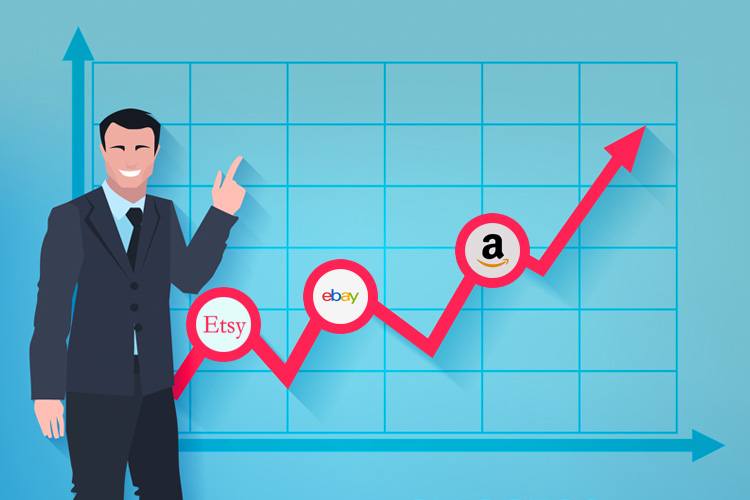Google Analytics Metrics to Monitor in Ecommerce

Almost every other person out there is trying to make it big on the digital platform these days. If you’re an online seller making use of multichannel selling software and real-time inventory sync tools to display your products on multiple websites, you will know the importance of keeping a track of things. Analytics are what matter the most in this era of digital business. Be it predicting future trends, foretelling possible future issues, or understanding customer behaviour, it all can be determined from data analytics.
Things to Look for in Ecommerce Google Analytics Metrics
Tracking the analytics is a tricky thing to do, because it is very easy to get lost in the game of numbers. Read on to find out what exactly to look for in Google Analytics as far as best metrics in ecommerce is concerned, and how you can use it to improve your sales.
- Audience:
This is the most important part of any business. While factoring in things like age and gender is useful, there are two more elements that work more in terms of analytics, namely location and technical specifications.Shipping logistics are extremely crucial to look at for digital stores. For this, you need to be aware of the location of your customer base, to figure out where your biggest markets are, and also plan the storage of your inventory and chart out your shipping accordingly. This particularly comes in handy if you’re looking to expand your business.
Technical specifications aid in the optimisation of your site. This is where you get to know about the least and most popular browsers and OS your customers use, or whether or not they use their mobile or desktop to visit your site, and in turn use this information to make the necessary changes and upgrades to your website.
Google Analytics has an ‘Audience’ section that gives you updates regarding user pathways, that helps you dissect patterns. For example, if a Facebook referral takes your customers directly to your page, you can invest more in Facebook ads. Also, the ‘New vs Returning’ section shows a clear distinction between first-timers and loyal customers, enabling you to accordingly target new shoppers as well as provide the necessary promotional info to the old ones. - Acquisition
The data you get from Acquisition not only lets you monitor how well your marketing campaigns are doing, but also shows you the most effective avenues for promotions. You will first want to look at where the traffic is coming from, be it search engine results, social media, emails, etc. This will help you customise your campaigns and you will know where to put your money.Post this, you may want to look at the individual sources. For example, if social media is drawing you traffic, evaluate and see which social media platform is garnering the most attention for your brand, and post accordingly. You can also dig up what kind of sites are sending you referrals, because often traffic is generated from unexpected sources, ranging from individual accounts to niche forums. After finding this out, you can nurture this traffic source to double the attention.
- Conversions
In ecommerce, Conversions analytics equates to sales data. The three metrics that help you the most in this field are Product Performance, Average Order Value, and Time to Purchase.Product performance entails your best and poorest performing products, seeing which can help you eliminate the not-so-popular ones with special promotions or so. You should also look for products with high sales rates and low page visits. These point out products that customers highly want, but aren’t aware of their presence on your store. Hence, you can redirect them to these with the help of external campaigns and features on your homepage.
The details for the Average Order Value can be found in the ‘Overview’ section of Google Analytics. If in case this drops, you can make amends by modifying your sales strategy by doing things like adding gifts and discounts, or providing free shipping for orders that cross a certain amount.
Lastly, Time to Purchase is super-important to look into. If customers take too long to shop on your website, if reflects negatively on your UX. This can mean that your navigation system is too cumbersome or complicated, and perhaps you can add some shopping aids to help the buyer understand the process better. You can add detailed specifications charts, including comparison guides, so that your customers don’t have to keep jumping between pages before arriving to a decision.
Conclusion
The main advantage of having an online store over a physical one is that you can acquire data that can be a total gamechanger. While it’s easy to make mistakes as humans, the numbers never lie or mislead. By drawing up these analytics, and keeping in mind these Google Analytics Metrics, you will be able to improve the quality of your business from several angles, and not have to worry about wasting your time on guesswork.
Write For Us
Gain multichannel inventory visibility and control with eChannelHub
Learn more about eChannelHub with a free demo, tailored for your unique retail business.
Request A DemoRequest a Demo
Gain multichannel inventory visibility and control with eChannelHub
Learn more about eChannelHub with a free demo, tailored for your unique online business




